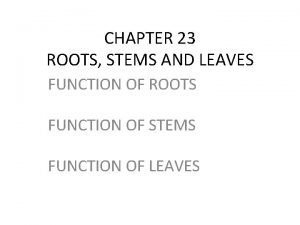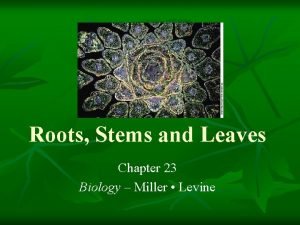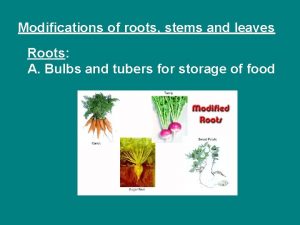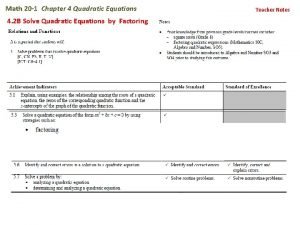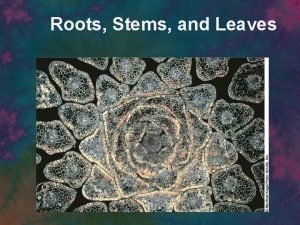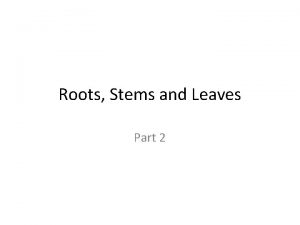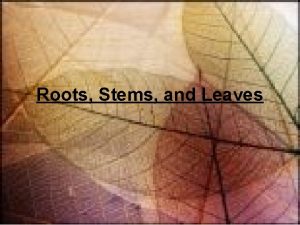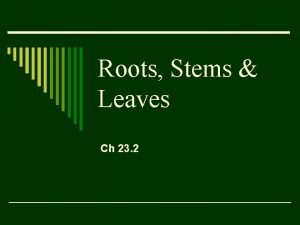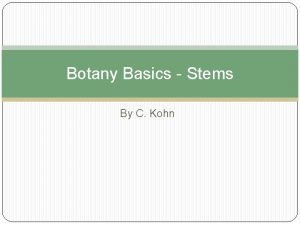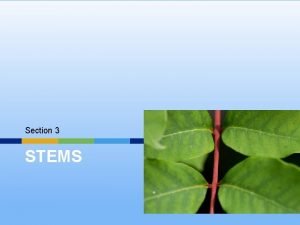Chapter 23 Roots Stems and Leaves The three








- Slides: 8

Chapter 23: Roots, Stems, and Leaves The three principle organs of seed plants Roots • absorb water and dissolved nutrients • anchor plants in the ground • hold plants upright through wind and rain Stems • support the plant • transports nutrients to the rest of the plant • compete for sunlight by holding leaves higher Leaves • are the principle organ for photosynthesis • have broad, flat surfaces, inc S. A. for sunlight • pores conserve water and allow gas exchange

Meristem Tissue Stem The only plant tissue that produces new cells by mitosis Apical meristem is found at the tips of stems and roots. Root

Tissue Systems Plants consist of 3 tissue systems: • Dermal tissue – outermost layer; forms the “skin” of the plant • Vascular tissue – transports water & nutrients; “bloodstream” • Ground tissue – tissue between the dermal and vascular tissues

Dermal tissue – generally consists of a single layer of epidermal cells. The outer layer is often covered with a thick, waxy layer called the cuticle, which protects against water loss and injury. Vascular tissue – contains several different cell types; transporting water and nutrients around the plant. Ground tissue – cells that lie between the dermal and vascular tissues.

Roots absorb water and dissolved nutrients from the soil. Plants have a one-way system to generate enough pressure to move water out of the soil and into the body of the plant. The water has no where else to go, but UP! Fibrous roots Tap roots Root hairs increase surface area!

Stems have 3 important functions: • Produce leaves, branches and flowers • hold leaves up in the sunlight • transport substances between roots and leaves Leaves are attached to a stem at structures called nodes. Some stems can also carry out photosynthesis

Formation of Wood Read p. 592 The most important “stem” is the stem of the tree. Wood is actually layers of xylem!

Leaves Transpiration – The loss of water from a plant through its leaves Maple tree leaves Black Walnut tree leaves
